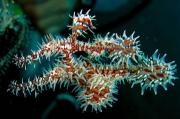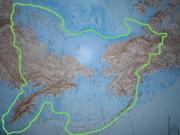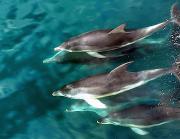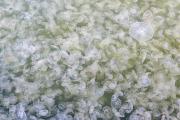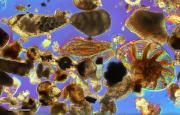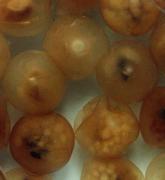Radio Program
Our regular Science and the SeaTM radio program presents marine science topics in an engaging two-minute story format. Our script writers gather ideas for the radio program from the University of Texas Marine Science Institute's researchers and from our very popular college class, Introduction to Oceanography, which we teach to hundreds of non-science majors at The University of Texas at Austin every year. Our radio programs are distributed at to commercial and public radio stations across the country.
This is a bad time to be a coral reef. In the last couple of decades, rising water temperatures have caused massive “bleaching” events around the globe. That’s killed a large fraction of the world’s reefs. Today, though, marine biologists are looking at ways to give Mother Nature a hand -- in large part by making better coral.
Corals are symbiotes. The coral animals, known as polyps, have colonies of algae living inside them. The algae are protected from predators, and, in return, they produce food for the polyps.
For many people, the rolling and pitching of an ocean-going boat means a quick trip to the medicine cabinet. But for a new type of automated boat, that same motion means free power. The wave action is used to push the boat forward. That could provide a new way for marine scientists to explore the oceans.
Scientists and engineers are experimenting with many ways to propel boats and ships with renewable energy. They’re trying solar and wind power, for example, and breaking apart seawater to power fuel cells.
When parents take their young children to crowded places, they hold hands to help keep the kiddos safe. That’s not a new strategy, though. A tiny marine organism was doing the same thing 430 million years ago.
Scientists found the fossilized organism at the bottom of an ancient sea in England. The creature was an arthropod -- the group of critters that includes insects, crabs, and shrimp. It was about a centimeter long, with a segmented body covered by a hard shell. It used about a dozen pairs of legs to crawl along the sea floor, and long antennas to feel out possible prey.
The ghost pipefish is a master of camouflage. One species looks like blades of seagrass, while another looks like fronds of kelp. And one species piles on several disguises. In fact, the ability to blend in -- to appear and disappear -- earned the ghost pipefish the “ghost” part of the name.
The ghost pipefish is found in warm, shallow waters from the eastern coast of Africa, across the Indian Ocean, to Australia and Southeast Asia. It inhabits everything from coral reefs to seagrass beds. It grows up to a few inches long, with females larger than males.
You’ll find lots of hiking trails along the western coast of the United States. But archaeologists are looking for one more. It might have been hidden for thousands of years -- on the bottom of the Pacific Ocean.
There’s evidence that the first people reached the Americas perhaps 15,000 years ago or even earlier. They came during the last Ice Age, when sea level was hundreds of feet lower than it is today. That exposed a “bridge” of land between present-day Asia and Alaska. People might have crossed that bridge in search of game or other necessities.
Some of the bottlenose dolphins near the town of Laguna, Brazil, seem to have a pretty good thing going. The dolphins herd schools of fish toward spots along the shore. At a signal from the dolphins, fishermen drop their nets into the water. The people trap some of the fish in their nets, while the dolphins get the rest. It’s one of a handful of known examples of humans and wild dolphins working together.
There are lots of ways to cause a blackout -- storms, mechanical failures, even explosions on the Sun. You can also do it with a few truckloads of jellyfish.
There are more than 1500 species of jellyfish. Many of them are both delicate and beautiful. Even so, the jellyfish can be quite a pest. It can deliver a nasty sting or decimate a fish population. And if you get enough of them, they can shut down major pieces of equipment -- especially power plants.
Life on Earth is a bit like a boxer who can take a few punches but still win the fight: It can be knocked around, but it’s hard to knock out.
Consider a punch delivered about 65 million years ago. A space rock the size of a city slammed into the Gulf of Mexico, off the Yucatan peninsula. Among other things, that blasted enough debris into the atmosphere to blot out the Sun around the entire planet. That killed off about three-quarters of all species of life -- including the dinosaurs. But life rebounded -- even at the site of the impact.
People often make fun of the phrase “jumbo shrimp,” as if anything called a shrimp could also be jumbo. What’s really funny, though, is the name of a relative of the shrimp: the giant ostracod. This odd critter is no bigger than a meatball. It’s “giant” only in comparison to other ostracods, which can be as tiny as a poppy seed.
Bad weather can make it hard to navigate. It’s hard to see where you’re going if there’s fog or heavy rain, so you can find yourself off course and in trouble.
For a while, biologists have suspected that bad weather can make it hard for whales and dolphins to navigate, too -- not fog and rain, but space weather. Space weather is caused by magnetic storms on the Sun. Giant eruptions can spray Earth with energy and charged particles. That can disrupt satellites, interfere with radio communications, and knock out power grids.




